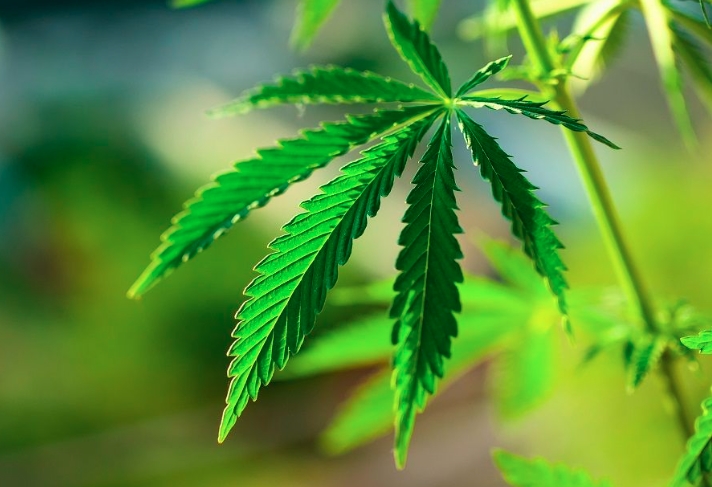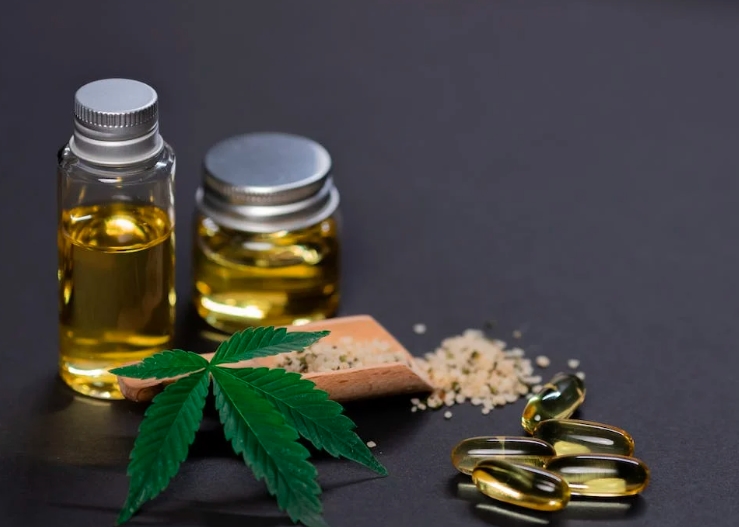The healing power of medical cannabis has been known to mankind for centuries. It has been used as a natural remedy for various illnesses and ailments throughout the world. In recent years, medical cannabis has been gaining more attention, as research has demonstrated its potential therapeutic benefits.
Medical cannabis, also known as medical marijuana, is a type of cannabis extract that is used to treat a variety of medical conditions. The active ingredients in medical cannabis are cannabinoids, which interact with the body’s endocannabinoid system to produce a variety of effects, including reducing inflammation, relieving pain, and reducing the symptoms of certain medical conditions, such as Alzheimer’s and epilepsy. Medical cannabis can also be used to treat nausea, insomnia, and anxiety.
The legal status of medical cannabis varies from country to country. In some countries, such as Canada and the United States, medical cannabis is legal and can be prescribed by doctors. In other countries, such as the United Kingdom, medical cannabis is illegal, although it is available on a compassionate basis for certain medical conditions. Despite this, the use of medical cannabis is becoming increasingly accepted in many countries, as more research is conducted into its potential benefits.

Health Benefits of Medical Cannabis
Pain Relief
Medical cannabis has been proven to be an effective and natural analgesic, providing relief from a wide range of pain-related symptoms. Pain relief from medical cannabis is most commonly associated with chronic pain, such as arthritis and cancer, but can also be used to provide relief from acute pain, such as migraines. The compounds found in cannabis, namely THC and CBD, interact with the body’s CB1 and CB2 receptors to provide relief from pain without the use of potentially dangerous and addictive opioid medications.
Anxiety and Depression
Research shows that medical cannabis can be an effective treatment for anxiety and depression. The compounds found in cannabis interact with the body’s CB1 and CB2 receptors to provide relief from the symptoms of both conditions. Studies have shown that cannabis can help reduce stress, improve mood, and even reduce the frequency of panic attacks. It has even been linked to a reduction in the symptoms of post-traumatic stress disorder (PTSD).
Nausea and Vomiting
Medical cannabis has been proven to be an effective treatment for nausea and vomiting. The compounds found in cannabis, namely THC and CBD, interact with the body’s CB1 and CB2 receptors to provide relief from these symptoms. Studies have shown that cannabis can reduce the severity and frequency of nausea and vomiting, making it an effective treatment for those suffering from chemotherapy, morning sickness, and other forms of nausea and vomiting.
Muscle Spasms and Seizures
Medical cannabis has been proven to be an effective treatment for muscle spasms and seizures. The compounds found in cannabis, namely THC and CBD, interact with the body’s CB1 and CB2 receptors to provide relief from these symptoms. Studies have shown that cannabis can reduce the severity and frequency of muscle spasms and seizures, making it an effective treatment for those suffering from Parkinson’s disease, multiple sclerosis, and other forms of muscle spasms and seizures.
Insomnia
Medical cannabis has been proven to be an effective treatment for insomnia. The compounds found in cannabis, namely THC and CBD, interact with the body’s CB1 and CB2 receptors to provide relief from insomnia symptoms. Studies have shown that cannabis can reduce the time it takes to fall asleep, increase the duration of sleep, and reduce the number of awakenings during the night, making it an effective treatment for those suffering from insomnia.
Inflammation and Autoimmune Disorders
Medical cannabis has been proven to be an effective treatment for inflammation and autoimmune disorders. The compounds found in cannabis, namely THC and CBD, interact with the body’s CB1 and CB2 receptors to provide relief from the symptoms of these conditions. Studies have shown that cannabis can reduce inflammation and improve the symptoms of autoimmune disorders, making it an effective treatment for those suffering from conditions such as lupus, rheumatoid arthritis, and psoriasis.
Cancer
Medical cannabis has been proven to be an effective treatment for cancer. The compounds found in cannabis, namely THC and CBD, interact with the body’s CB1 and CB2 receptors to provide relief from the symptoms of cancer. Studies have shown that cannabis can reduce the side effects of chemotherapy, improve appetite, and reduce pain, making it an effective treatment for those suffering from cancer.
Types of Medical Cannabis
Medical cannabis is a term used to describe cannabis and its various components that have been recommended or prescribed by a doctor for therapeutic purposes. Medical cannabis can be used to treat a range of conditions, including chronic pain, anxiety, depression, epilepsy, and cancer. There are three main types of medical cannabis: Sativa, Indica, and Hybrid strains.
Sativa Strains
Sativa strains are known for their uplifting and energizing effects, making them a great choice for daytime use. Sativa strains are generally higher in THC and are often used to treat depression, fatigue, stress, and other mood disorders. They can also be used to boost creativity, focus, and energy.
Indica Strains
Indica strains are known for their relaxing and calming effects, making them a great choice for nighttime use. Indica strains are generally higher in CBD and are often used to treat insomnia, anxiety, chronic pain, and inflammation. They can also help to reduce muscle spasms and control seizures.
Hybrid Strains
Hybrid strains are a combination of both Sativa and Indica strains, and contain a balance of both THC and CBD. Hybrid strains can provide a combination of uplifting and calming effects, making them a great choice for both day and night use. Hybrid strains are often used to treat a range of conditions, such as chronic pain, inflammation, anxiety, depression, and insomnia.
THC and CBD Ratios
The ratio of THC and CBD in a strain of medical cannabis will determine the type and intensity of the effects experienced. Medical cannabis strains can range from high THC to high CBD, or they can have a balanced ratio of both. Generally, Sativa strains are higher in THC, while Indica strains are higher in CBD. Hybrid strains can contain a balanced ratio of THC and CBD.
Methods of Consumption
Medical cannabis can be consumed in a variety of ways. It can be smoked, vaped, eaten in edibles, or taken in the form of oils and tinctures. Each method of consumption has its own advantages and disadvantages, and it is important to discuss with your doctor which method of consumption is best for you.
Dosage Guidelines
The dosage of medical cannabis will depend on the condition being treated, the type of strain being used, and the method of consumption being used. It is important to discuss dosage guidelines with your doctor before using medical cannabis. Generally, the dose should start low and then increase gradually until the desired effects are achieved.
Risks and Side Effects of Medical Cannabis
Medical cannabis, when taken in the right amounts, can be beneficial for certain medical conditions. However, like any other medication, it can also have risks and side effects. Here, we will discuss these risks and side effects in detail.
Addiction and Dependence:
Medical cannabis is addictive and can lead to physical and psychological dependence. People who take medical cannabis for extended periods can experience withdrawal symptoms, including anxiety, depression, insomnia, and irritability, if they stop taking it suddenly.
Impaired Cognition and Memory:
Medical cannabis can impair thinking and memory, making it difficult to concentrate and process information. It can also cause confusion and difficulty with complex tasks.
Psychiatric Side Effects:
Medical cannabis can cause psychiatric side effects such as paranoia, psychosis, and hallucinations. These side effects can be more severe in people with a history of mental illness.
Physical Side Effects:
Medical cannabis can cause physical side effects such as dry mouth, red eyes, increased appetite, and increased heart rate. It can also lead to increased anxiety, dizziness, and nausea.
Drug Interactions:
Medical cannabis can interact with other medications, resulting in unforeseen side effects. It is important to consult with a doctor before taking medical cannabis to ensure that there are no potential drug interactions.
Medical Cannabis Research and Clinical Trials
Overview of Current Research on Medical Cannabis
Medical Cannabis research has been gaining significant attention in recent years as people become more aware of its potential medical benefits. Cannabis is known to have a variety of therapeutic properties, including pain relief, anti-inflammatory effects, and anti-anxiety effects. Recently, research has also been focused on its potential to treat conditions like epilepsy, Alzheimer’s disease, and cancer.
Clinical Trials and Their Findings
Clinical trials of medical cannabis have been conducted to evaluate its efficacy for a variety of medical conditions. In some cases, clinical trials have found that medical cannabis can be effective for treating certain conditions. For example, a 2018 study found that medical cannabis was effective in treating chronic pain in patients with cancer. Similarly, a 2019 study found that medical cannabis was effective in reducing symptoms of anxiety and depression in patients with post-traumatic stress disorder. In addition, a 2020 study found that medical cannabis was effective in reducing seizures in patients with epilepsy.
Controversies and Limitations in Medical Cannabis Research
Despite the potential medical benefits of medical cannabis, there are still some controversies and limitations in medical cannabis research. One major controversy surrounding medical cannabis research is the lack of federal funding for such studies. This is due to the fact that cannabis is still classified as a Schedule I drug in the United States, making it illegal to possess and use, even for medical purposes. In addition, many of the current studies on medical cannabis are limited by small sample sizes and short study durations, making it difficult to draw reliable conclusions about its medical efficacy.
Legal and Regulatory Framework for Medical Cannabis
International and National Regulations on Medical Cannabis
Medical cannabis is increasingly being accepted and utilized by patients as a viable form of medication with numerous benefits. Countries around the world are now recognizing the potential of medical cannabis and have begun implementing regulations to govern its use.
At the international level, the World Health Organization (WHO) has endorsed the use of medical cannabis and is actively supporting researching into its therapeutic potential. The WHO has declared that cannabis has therapeutic benefits and that it does not carry the risk of addiction or dependence associated with other forms of medication.
At the national level, countries are increasingly developing and implementing regulations to govern the use of medical cannabis. These regulations typically cover the availability, access, and production of medical cannabis. The regulations may also cover the classification of cannabis, the licensing of producers and distributors, and the age restrictions for accessing medical cannabis.
Access to Medical Cannabis
The access to medical cannabis varies depending on the country or region in which it is being accessed. In some countries, medical cannabis is only available through prescription from a medical practitioner. In other countries, medical cannabis may be available through self-medication. In some regions, medical cannabis may be available through specialized dispensaries.
Patient Rights and Responsibilities
Patients who have legal access to medical cannabis have certain rights and responsibilities. Patients have the right to access information about the medical cannabis products available to them, the potential risks and benefits of using medical cannabis, and the regulations governing the use of medical cannabis. Patients also have the right to discuss their options with a medical practitioner and to make an informed decision about their medical treatment.
Patients also have certain responsibilities when using medical cannabis. Patients should ensure that they abide by the regulations governing the use of medical cannabis, that they only use medical cannabis as prescribed by their medical practitioner, and that they use it responsibly. Patients should also be aware of the potential risks associated with using medical cannabis and should discuss any concerns with their medical practitioner.
Personal Stories of Medical Cannabis Use
Patient Testimonials and Anecdotes:
Patients who have used medical cannabis have personal stories to tell, and these can be incredibly helpful in helping others to understand more about the effects and uses of this substance. By hearing the stories of those who have used medical cannabis, it can be easier to understand the benefits and challenges that can come with its use. These stories can be shared in a variety of ways, including through blogs, forums, and even through personal conversations.
Benefits and Challenges of Using Medical Cannabis:
Medical cannabis has been shown to have a variety of benefits, from reducing pain and inflammation to helping with anxiety and depression. It can also be used to treat a variety of conditions, including cancer, seizures, and even HIV/AIDS. However, there are also some challenges that can come with its use, such as potential addiction, impaired coordination, and altered mental status. It is important to understand these potential risks before beginning to use medical cannabis.
Strategies for Responsible and Effective Use:
It is important to use medical cannabis responsibly in order to reap its full benefits. This includes understanding the risks associated with its use, as well as taking into account personal medical history and health conditions. Additionally, it is important to use the correct dosage and frequency in order to ensure the most effective use. It is also important to find a reliable source for medical cannabis, and to only use products that are tested for purity and potency.
Tips for Using Medical Cannabis Safely:
• Start with a low dosage and gradually increase it to find the most effective level for your individual needs.
• Find a reliable source for cannabis products in order to ensure quality and safety.
• Be aware of any potential interactions with other medications or supplements.
• Make sure to take regular breaks from using medical cannabis to avoid any potential tolerance issues.
• Listen to your body and be aware of any potential side effects.
• Consult with a healthcare provider if you have any questions or concerns about using medical cannabis.

Future of Medical Cannabis
Medical cannabis has been gaining increasing attention as a potential treatment for a variety of conditions and illnesses. As research progresses, new trends and innovations are emerging that have implications for healthcare and society. In this article, we will explore the emerging trends and innovations in medical cannabis research, the implications for healthcare and society, and the challenges and opportunities for the medical cannabis industry.
Emerging Trends and Innovations in Medical Cannabis Research
The use of medical cannabis is becoming increasingly popular, and research is progressing rapidly. Some of the most exciting emerging trends and innovations in medical cannabis research include:
• The use of genetic engineering to produce cannabis plants with specific desired traits. This allows for the production of plants with higher concentrations of certain cannabinoids, such as cannabidiol (CBD) and tetrahydrocannabinol (THC).
• The development of new delivery systems, such as sublingual sprays, transdermal patches, and inhalers, which make it easier for patients to take their medication.
• The use of cannabis to treat a variety of conditions, including chronic pain, post-traumatic stress disorder, and epilepsy.
Implications for Healthcare and Society
The emerging trends and innovations in medical cannabis research have a number of implications for healthcare and society. These include:
• Increased access to cannabis-based treatments, which can help reduce the use of opioids and other potentially harmful medications.
• Improved understanding of the therapeutic benefits of cannabis, which can lead to more effective treatments.
• Greater acceptance of medical cannabis, which can reduce stigma and make it easier for patients to access treatments.
Challenges and Opportunities for Medical Cannabis Industry
The medical cannabis industry faces a number of challenges and opportunities. These include:
• Regulatory hurdles, such as the need for government approval of cannabis-based treatments.
• The need for further research to understand the full therapeutic benefits of cannabis.
• The potential for increased competition from other players in the industry, such as pharmaceutical companies.
• The potential for increased access to capital for companies in the medical cannabis industry.
Conclusion
The healing power of medical cannabis is undeniable. By providing a safer and more natural alternative to traditional pharmaceuticals, medical cannabis has proven to be a valuable asset in the medical community. Its ability to reduce pain, inflammation, seizures, nausea, and other symptoms associated with chronic illnesses is unrivaled. Furthermore, its potential to treat a variety of mental health conditions has been well-documented, making it a viable therapeutic option for those in need. The fact that medical cannabis is becoming more widely accepted and available is a testament to its powerful healing potential. As the research continues to evolve and more countries and states legalize cannabis for medical use, there is no doubt that medical cannabis will continue to be a powerful healing tool for decades to come.
FAQs
1. What is medical cannabis?
Medical cannabis is a form of treatment using the whole, unprocessed marijuana plant and its pure extracts to treat a variety of symptoms and conditions. It can be consumed through vaporizing, smoking, or ingesting the plant.
2. What are the benefits of medical cannabis?
The potential benefits of medical cannabis include pain relief, improved mood, reduced inflammation, and relief from nausea. It has also been used to help treat neurological disorders and mental health conditions such as PTSD, depression, and anxiety.
3. Is medical cannabis legal?
The legal status of medical cannabis varies by state and country. In the United States, medical cannabis is legal in some states but not others. Check your local laws for more information.
4. How is medical cannabis used?
Medical cannabis can be ingested, smoked, or vaporized. Each method has its own advantages and disadvantages, and it is important to understand the differences before trying any method.
5. What are the side effects of medical cannabis?
The side effects of medical cannabis can vary depending on the individual, the strain, and the method of consumption. Common side effects include dry mouth, dizziness, nausea, and fatigue.
6. Is medical cannabis safe?
Medical cannabis is generally considered safe, but it is important to discuss potential risks with your doctor before starting any treatment.
7. Who can prescribe medical cannabis?
In the United States, only physicians who are licensed to prescribe medical cannabis can do so.
8. How much medical cannabis should I take?
The amount of medical cannabis you should take will depend on your individual needs and the recommendation of your doctor. It is important to start with a small dose and gradually increase until the desired effect is achieved.
9. What forms of medical cannabis are available?
Medical cannabis is available in several different forms, including oils, tinctures, edibles, and topicals. Your doctor can help you decide which form is best for your needs.
10. What are the risks of medical cannabis?
The risks of medical cannabis use include addiction, impaired motor skills, and cognitive impairment. It is important to discuss the potential risks with your doctor before starting any treatment.


















